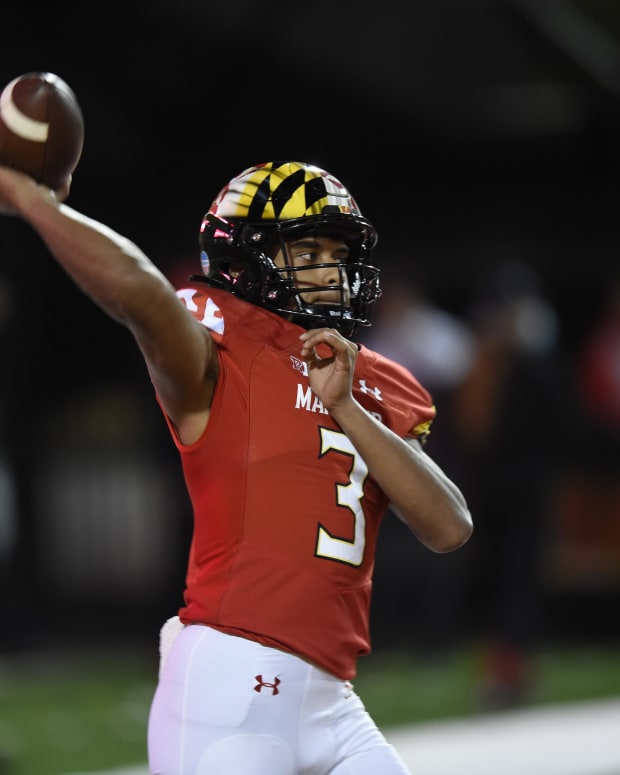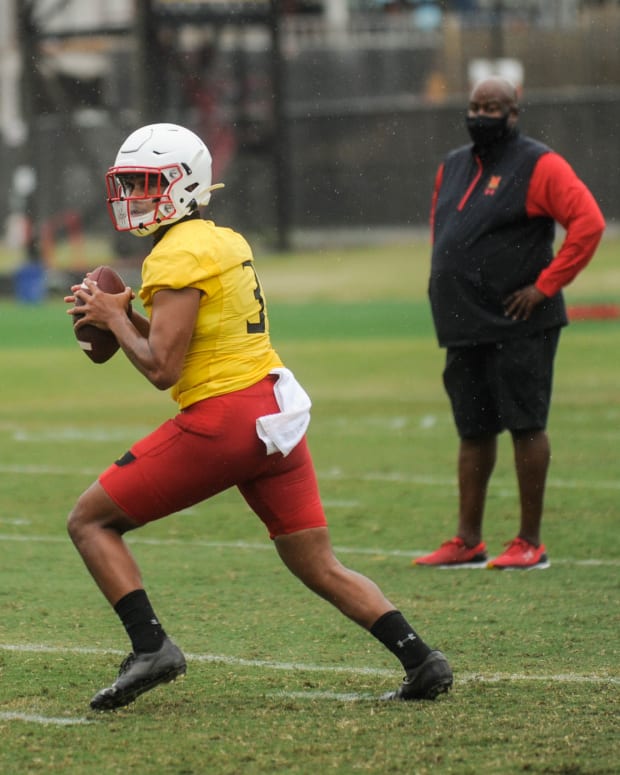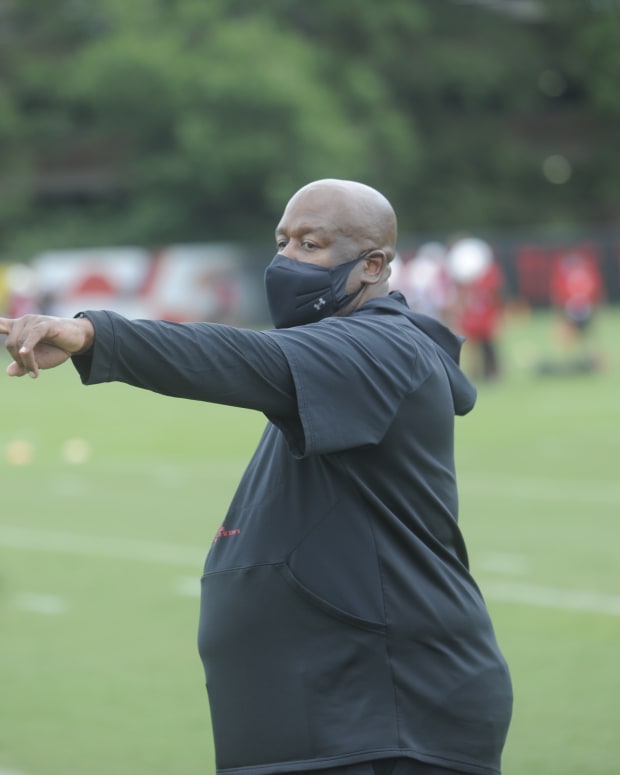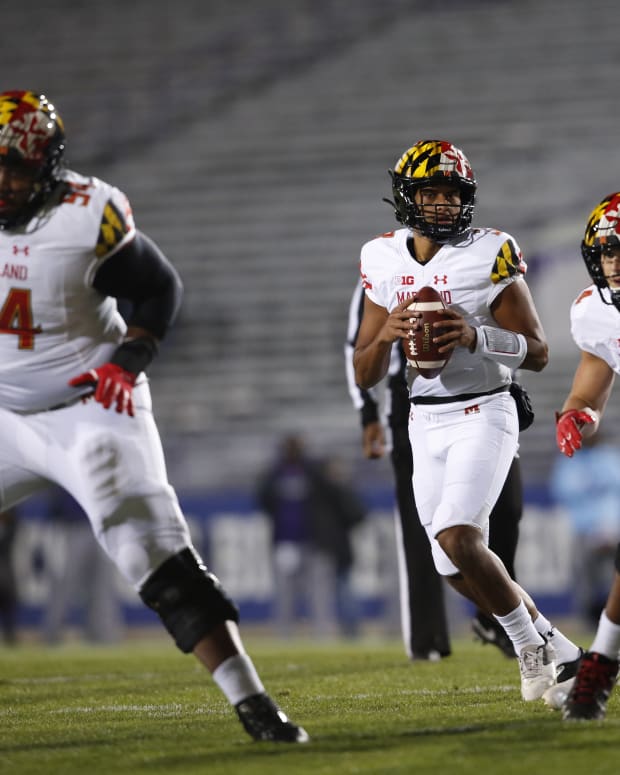Why Towson Should be Added Back to Maryland's 2020 Schedule
Several refer to the marque matchups lost from the Big Ten’s decision—no more Ohio State-Oregon, Penn State-Virginia Tech, Miami-Michigan State and Wisconsin-Notre Dame. But what’s overlooked is the initial 36 teams, including 28 FBS programs, that were impacted as a result of Thursday’s decision.
From Maryland’s perspective, they lose 2020 non-conference matchups against Towson, Northern Illinois and West Virginia as Big Ten commissioner Kevin Warren noted that the conference will work on scheduling conflicts over the next week. While the large belief is that Big Ten teams will simply have one added game to complete their ten-game, conference-only schedule, frustration began to boil over for those negatively impacted by the call, including Iowa senator Chuck Grassley.
While ‘fun’ misses the complete objective of the decision to alter plans for the 2020 season, the cancelled in-state matchup between Iowa-Iowa State is one of a long list of non-conference games that are lost. But the cancelled matchup does serve as a head-scratcher; if the Big Ten truly is focused on how to play “in a safe and responsible way,” then telling a team to travel by plane for a road game isn’t the compromise.
Enter Towson.
The Tigers lose out on their $325,000 guarantee from Maryland as a result of Thursday’s news, a marginal part of the over $22 million in guarantees lost in the Big Ten’s decision. If the Big Ten remains committed to the “safe and responsible way,” then let the program that’s just a 30-minute trip down I-95 follow through for Maryland’s tenth game of the season. The concern over unequivocal health standards across conferences may be why the Big Ten is “limiting competition to other Big Ten institutions,” but the long-term financial sustainability for smaller schools could be the ripple effect felt across college sports.
If Stanford, a school with a $27.7 billion endowment, cited the pandemic as the breaking point to cut 11 of their 36 varsity sports, then how are smaller schools not the real losers in this shift? Towson generates nearly 20% of their total revenue from football alone; football at Northern Illinois, who lost a pair of games against Iowa and Maryland, accounts for over 31% of their total revenue; Ball State, also losing a pair of games against Indiana and Michigan, generates 32% of their total revenue from football.
If the Big Ten is focused on scheduling over the next week, then reconsidering the tenth game allotment needs to be at the forefront. We’re kidding ourselves by saying scheduling conference matchups to stay within the conference’s geographical footprint is the safest way to navigate through this pandemic—COVID-19 isn’t immune to the Ohio State-Michigan or Ohio State-Penn State matchup anymore than Maryland-Towson, Illinois-Illinois State or Indiana-Ball State. And that’s not even considering the various restrictions imposed by each state as states such as California, Texas and Florida working to reverse their spikes in confirmed cases.
So if football is on as scheduled for the fall, then a deeper analysis into the tenth game needs to be done. States have full authority over mandating their own restrictions to curb the spread of coronavirus as California, Florida and Texas are now tackling their respective spikes in recent weeks, but if football is still on as scheduled in light of these events, then the decision to cancel in-state matchups such as Maryland-Towson, Indiana-Ball State, Ohio State-Bowling Green and Rutgers-Monmouth should still be on the table. The conference did add that they’re also prepared not to play “should the circumstances so dictate,” but if college football is on, then it shouldn’t be the Group Five or FCS programs that suffer.
Maybe this is how the independents, such as BYU and Notre Dame, alter their 2020 schedule as a result of the shift. Ivy League has already cancelled fall sports, announcing the move just a day before Power Five conferences took the next step, so if conferences are actually committed to the health and safety of student-athletes as they go ahead for a fall season, then the lost in-state matchups should be the first thing revisted.
Sure, the possibility of in-state matchups being readded to 2020 schedules poses plenty of questions, such as whether conferences can agree on a unified protocol to ensure the equal safety of all student-athletes. But if the Big Ten is leading the charge to continue football for the fall, then it shouldn’t just be the Power Five schools that benefit. Because the long-term trickle down impact of the coronavirus will lead to more cuts for non-revenue sports across the country, taking away scholarships from potentially hundreds of more student-athletes in the coming years. If the primary concern remains to be reducing risk, then the Big Ten would’ve followed the CDC’s recommendation to minimize flying, not add a potential road game that puts over a hundred of coaches and student-athletes on a plane to play a game. If reducing the risk remains that primary concern, then the Big Ten should also lead the charge to further examine adding in-state matchups back onto the 2020 schedule.







